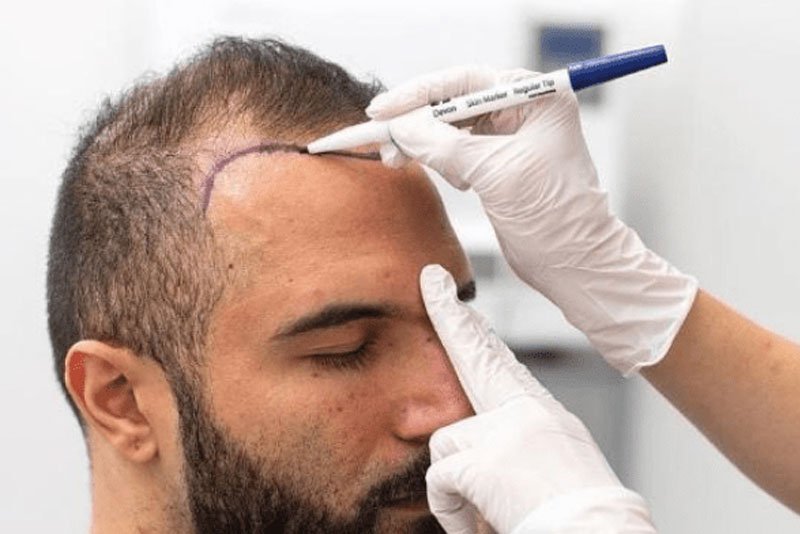Hair loss is a common concern affecting individuals across different ages and backgrounds. As advancements in hair restoration techniques continue to evolve, many seek effective solutions that provide natural-looking results. One such innovative method gaining popularity is DHI Direct Hair Implant in Abu Dhabi. This technique offers a minimally invasive approach to restoring hair density with impressive precision and results. But a common question among prospective patients is whether DHI hair transplants are safe for all hair types. In this comprehensive guide, we will explore the safety aspects of DHI hair transplants, their suitability across diverse hair types, and what patients can expect from this advanced procedure.
Understanding DHI Hair Transplant: An Overview
What is DHI Hair Transplant?
DHI, or Direct Hair Implantation, is a modern hair restoration technique that involves the direct implantation of hair follicles into the scalp. Unlike traditional methods, DHI uses a specialized tool called the Choi pen, which allows for precise placement of hair follicles at the optimal angle, depth, and direction. This results in a natural appearance and quicker recovery time.
How DHI Differs From Traditional Hair Transplant Methods
Traditional hair transplants typically involve two stages: harvesting hair grafts and then implanting them into the recipient area. DHI combines these steps into a single process, eliminating the need for creating prior incisions or channels. This integrated approach minimizes trauma to the scalp, reduces bleeding, and enhances the overall healing process.
The Safety Profile of DHI for Different Hair Types
General Safety Considerations
DHI is considered a safe procedure when performed by experienced specialists using sterile techniques. Its minimally invasive nature significantly reduces the risk of complications such as infection, scarring, or unnatural hair growth. Proper patient assessment and adherence to post-procedure care are essential components of ensuring safety.
Suitability for Curly, Wavy, and Straight Hair Types
One of the key advantages of DHI is its adaptability to various hair textures:
-
Straight Hair: DHI works exceptionally well with straight hair, as the natural alignment makes implantation straightforward, leading to seamless results.
-
Wavy Hair: The technique accommodates wavy hair effectively, with careful placement ensuring the hair’s natural flow is maintained.
-
Curly Hair: For curly hair types, DHI allows precise control over follicle placement, ensuring the hair’s natural curl pattern is preserved and looks authentic.
Handling Different Hair Thickness and Density
DHI is versatile in managing varying hair thicknesses and densities. Whether a patient has fine, thin hair or thicker, denser hair, the method can be tailored to match the natural characteristics, maintaining safety and aesthetic harmony.
Factors Influencing the Safety and Effectiveness of DHI
Patient Selection and Pre-Procedure Assessment
Safety begins with thorough patient evaluation. Factors such as scalp health, hair loss pattern, and overall medical history are considered to determine suitability. Proper assessment ensures that the procedure aligns with individual hair types and scalp conditions.
Skill Level of the Practitioner
The success and safety of DHI heavily depend on the expertise of the practitioner. Experienced surgeons with specialized training in DHI techniques are better equipped to handle different hair types and ensure precise follicle placement.
Post-Procedure Care and Follow-Up
Adherence to post-operative instructions is vital for safety and optimal results. Proper care minimizes risks such as infection or follicle dislodgement, regardless of hair type.
Common Myths About DHI Hair Transplant and Hair Types
Myth 1: DHI is Only Suitable for Straight Hair
Contrary to this misconception, DHI is adaptable for various hair textures, including wavy and curly hair. The technique’s precision allows for natural results across diverse hair types.
Myth 2: Curly or Wavy Hair Cannot Be Transplanted Safely
With skilled practitioners, transplanting curly or wavy hair is safe and effective. The key is careful follicle placement to maintain the hair’s natural pattern.
Myth 3: DHI Cannot Handle Fine or Thin Hair
DHI can be customized to suit fine or thin hair, ensuring that the transplanted hair blends seamlessly with existing hair, maintaining safety and aesthetic appeal.
Benefits of Choosing DHI for All Hair Types
Natural-Looking Results
The ability to implant individual follicles at precise angles ensures that hair grows naturally, regardless of texture or thickness.
Minimal Scarring and Rapid Recovery
DHI’s minimally invasive approach reduces scarring and promotes faster healing, making it suitable for all hair types and lifestyles.
Customizable Approach
The technique’s flexibility allows practitioners to tailor the procedure based on hair type, density, and patient preferences, ensuring safety and satisfaction.
What to Expect During and After the Procedure
Procedure Experience
Patients are typically awake during the procedure, experiencing minimal discomfort. The process involves selecting healthy hair follicles, which are then implanted directly into the scalp with precision.
Recovery and Results Timeline
Post-procedure, patients may experience mild swelling or redness, which subsides quickly. Hair shedding may occur temporarily, with new growth becoming visible within a few months. The natural growth pattern is preserved across all hair types through careful implantation.
Final Thoughts
The safety and success of DHI Direct Hair Implant Abu Dhabi hinge on several factors, including the skill of the practitioner, proper patient selection, and adherence to post-operative care. The technique’s adaptability makes it a viable and safe option for a wide range of hair types—from straight to curly, fine to thick. Its minimally invasive nature, combined with precise implantation, ensures that individuals with diverse hair textures can achieve natural-looking, lasting results.
If you are considering a hair restoration procedure and have varied hair characteristics, consulting with a qualified specialist can help determine if DHI is the right choice for you. Embracing this advanced technique may be the key to restoring confidence and achieving a fuller head of hair, regardless of your hair type.







0 Comments